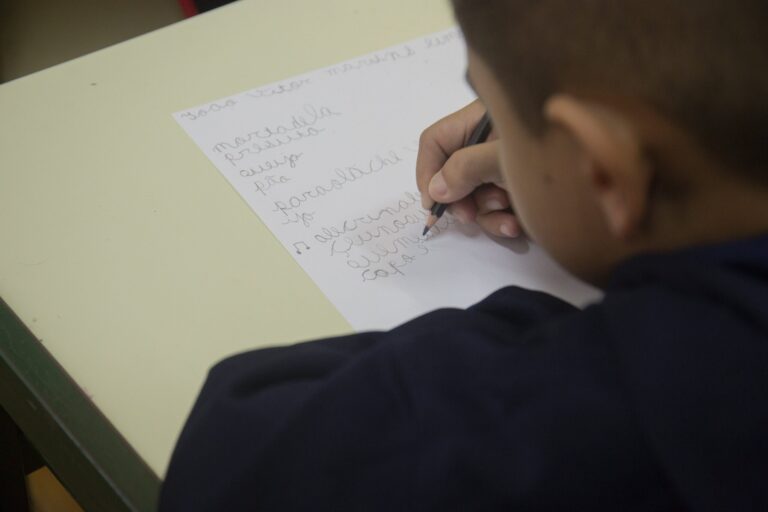Opinion – Daniela Caldeirinha, Director of Literacy
Last week, the results of the Progress in International Reading Literacy Study (PIRLS) were released, an international study that assesses the reading progress of 4th-graders. It was the first time Brazilian students participated in the assessment alongside students from 56 other countries. The results are quite concerning: Brazil ranked among the last, ahead only of Jordan, Egypt, and South Africa. Simply put, about 75% of 10-year-old Brazilian children lag behind the average of almost all developed countries that participated in the assessment.
To better understand the study, it’s worth knowing what PIRLS defines as “reading literacy”: “the ability to understand and use those written language forms required by society and/or valued by the individual.” Thus, readers are able to “construct text meaning in a variety of contexts” and “read to learn, to participate in communities of readers in school and daily life, and for enjoyment.” Children do not attain this stage when they fail to learn to read correctly, and it’s fundamental for their development. The Institute on Interdisciplinarity and Evidence in Educational Debate (IEDE – an institute born with the mission to help strengthen the educational debate in Brazil) has produced fascinating material about the exam and Brazil’s performance. I recommend reading it.
In Brazil, the assessment was administered to 4,941 ten-year-old 4th-graders. However, Brazil’s National Learning Standards (BNCC) stipulates that children should be literate by the end of the 2nd grade. Therefore, the low results in the 4th grade indicate that the mission of the first stage was not fulfilled. If we do not invest in literacy by the end of the 2nd grade, we will never achieve good results in assessments like this. When we do not ensure reading skills for children at the beginning of their educational journey, it compromises all subsequent learning (in all areas of knowledge).
The PIRLS international assessment was administered in 2021 during the COVID-19 pandemic, which had unequivocal negative impacts on education. Also, in 2021, Brazil’s National Learning Assessment (SAEB) for the 2nd grade showed a terrible drop in literacy levels in Brazil. We went from 49% to 31% of children being literate at the right age. However, keep in mind that 49% was a poor rate to begin with. The same National Learning Assessment also revealed that 79% of Brazilian students did not reach the appropriate literacy level. Even though the pandemic exacerbated the problem, the issue was already truthfully grave.
A clue that recovery can be swift comes from the 16 partner states of the Collaborative Literacy Program (PARC – an initiative by the Lemann Foundation, Natura Institute, and Associação Bem Comum). In a reading fluency assessment involving 300,000 children conducted at the end of 2022, we came very close to achieving the 2019 levels, which shows that the drop was significant. Nevertheless, learning recovery can be accelerated if enough effort and intentionality are invested in this process.
The PIRLS results reinforce that Brazil must prioritize literacy. The following assessment is scheduled for 2026, and the country has until then to focus plans and investments on providing Brazilian students with the conditions to achieve better rankings. Since the beginning of the year, the Ministry of Education has been announcing that this will be a top agenda item, and we are all hopeful that a policy that materializes this need will launch soon. The fact that learning recovery is faster in states that implement collaborative literacy policies with municipalities is proof. It is not a simple task, but joint mobilization around specific, coordinated, and targeted public policies for this stage forges the path to change this scenario. If literacy is prioritized from the highest leadership down to the classroom, we can progress.

